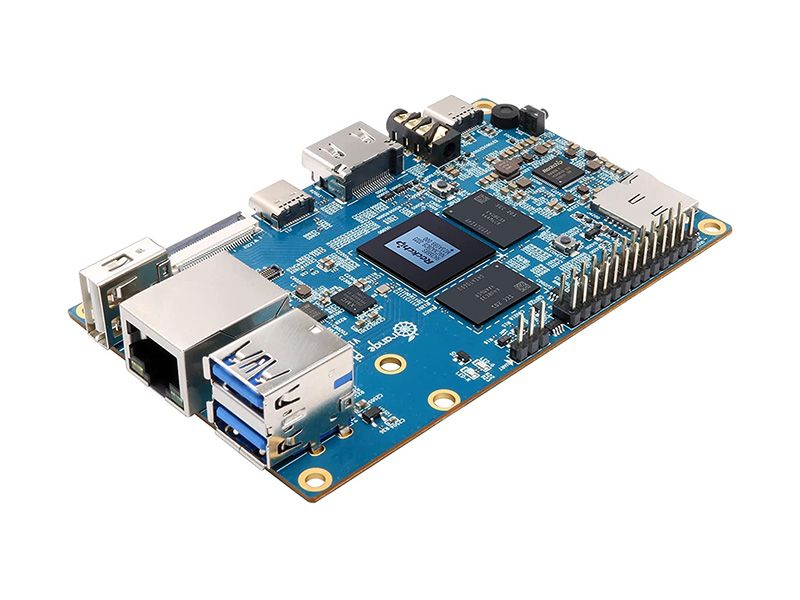
Orange Pi 5 by Shenzhen Xunlong Software CO., Limited
Orange Pi 5 uses Rockchip RK3588S new generation 8-core 64-bit processor, quad-core A76+quad-core A55, with 8nm process design, up to 2.4GHz main frequency, integrated ARM Mali-G610 GPU, embedded high-performance 3D/2D image acceleration module, built-in NPU with 6Tops computing power, with 4GB/8GB/16GB/32GB (LPDDR4/4x), and up to 8K display processing capability.
Orange Pi 5 provides abundant interfaces, including HDMI output, GPIO interface, M.2 PCIe2.0, Type-C, Gigabit LAN port, 2USB2.0, 1USB3.0, etc.; It can be widely used in tablets, edge computing, artificial intelligence, cloud computing, AR/VR, intelligent security, smart home and other fields, covering AIoT various industries.
Specifications
- Rockchip RK3588S (8nm LP process)
- 8-core 64-bit processor Big.Little Architecture: 4xCortex-A76 and 4xCortex-A55, Big core cluster is 2.4GHz, and Little core cluster is 1.8GHz frequency.
- Arm Mali-G610 MP4 “Odin” GPU Compatible with OpenGL ES1.1/2.0/3.2, OpenCL 2.2 and Vulkan 1.2 3D graphics engine and 2D graphics engine
- Built-in AI accelerator NPU with up to 6 TOPS, supports INT4/INT8/INT16 mixed operation
- RK806-1 PMU
- 4GB/8GB/16GB /32GB(LPDDR4/4x)
- QSPI Nor FLASH 16MB MicroSD (TF) Card Slot M.2 M-KEY Socket USB3.0 × 1 USB2.0 × 2 Type-C (USB3.1) ×1
- HDMI2.1, up to 8K @60Hz DP1.4 (DisplayPort), DP1.4 and USB3.1 ports are multiplexed, and the port is shared with Type-C 2 * MIPI D-PHY TX 4Lane, configurable up to 4K @60Hz
- MIPI CSI 4Lane 2 * MIPI D-PHY RX 4Lane
- CODEC: ES8388 3.5mm headphone jack audio input/output Input: Onboard MIC HDMI 2.1 eARC
- 10/100/1000Mbps Ethernet
- For extending UART, PWM, I2C, SPI, CAN and GPIO interfaces.
- Support PCIe NVMe SSD Support custom PCIe Wi-Fi6+BT5.0 module
- 1×MaskROM key 1×Recovery key 1×On/Off key
- Support Type-C power supply, 5V @ 4A
- 3 Pin debug serial port (UART)
Purchase
Contribute
Have some info to add for this board? Edit the source for this page here.
Adafruit Blinka Installation
We use a special library called adafruit_blinka (named after Blinka, the CircuitPython mascot) to provide the layer that translates the CircuitPython hardware API to whatever library the Linux board provides.
For example, on Raspberry Pi we use the python RPi.GPIO library. For any I2C interfacing we'll use ioctl messages to the /dev/i2c device. For SPI we'll use the spidev python library, etc. These details don't matter so much because they all happen underneath the adafruit_blinka layer.
